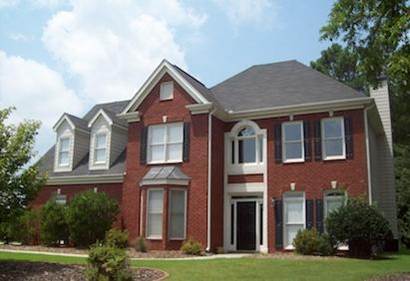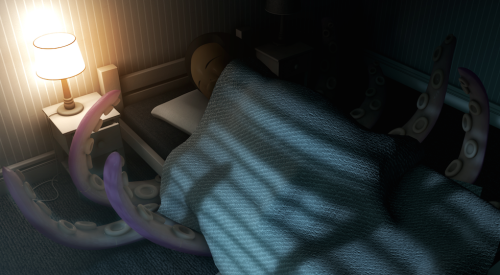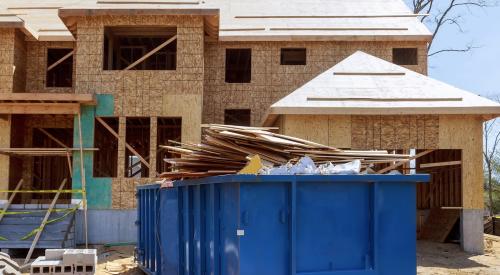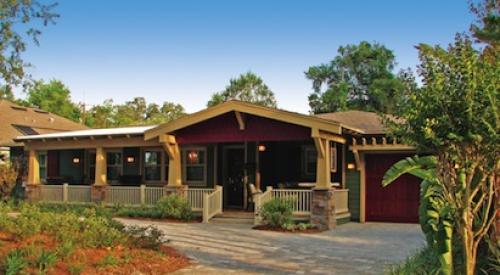The accompanying picture was used recently with what was an otherwise good article on how to create profitable design. That article is much bigger in scope than simply the design of the house itself but still, the irony is palpable. What’s your first impression? Give it a good examination before you go on, in fact, gather some of your people around the monitor or print it out and ask if this is an intelligent, cost-effective design? Looks pretty good? Not if you have spent the past 5 years or perhaps just the past 5 weeks really dissecting plans and elevations from a Lean perspective.
Remember Lean is much more than mere cost-cutting. Lean challenges us to eliminate waste in product and process, ensuring that we always provide true value in everything we build. Will the customer pay for it and if not, there better be a helluva good reason to have it there, such as a deranged inspector who has forced you into it or all your competitors are doing it (even if you think it is waste) and sales is totally convinced you need it to compete.
It turns out this was just a stock photo with no name or builder associated with it, simply pulled from the archives, and I was relieved that someone did not pick it with a belief that this represented good design. I have no clue who built it or where, but this elevation is a veritable poster child for poor design that robs profit, exactly the opposite of what the article espoused.
So how many issues did you find? I made my list and shot it over to our Lean Architect, Todd Hallett of TK Design, and he added some further observations. Here are the problems we see:
- Fake, non-functional keystones – dumb and costly. Does it really never occur to anyone that a keystone is only functional in an arch? Faux design features can work, but a keystone over a straight lintel just makes me shake my head. If I lived there it would bug me every day.
- The vent in the 2nd floor gable is massively out of proportion. How hard can it be to get this right? It is probably just a decorative issue, even if the vent is partly functional. But if by chance this house requires that much venting, find another place to get it and reduce the size of this mega-vent to something more appropriate.
- Mis-sized shutters, especially those skinny ones on either side of the double window front and center. Shutters must be the single most abused feature on homes in America. “Okay, throw some shutters on there! That’s cool! – not.” Most shutters can be eliminated and the house gets better. Buyers may not mentally fold the shutters over the window and see that they are ridiculous, (like I do) but subconsciously they know something isn’t right. I recently saw a house with arched shutters on either side of a rectangular window, next door to an elevation with rectangular shutters on either side of an arched window. Made me want to scream. There are so many good-looking and effective ways to trim out windows. Within ½ mile of my office there are two areas of historical homes that must have more than 20 different non-shuttered approaches to window trim and many of them can be replicated quite economically. Those look cool. Take the money from the faux-shutters and put it into better, more authentic design features.
- Todd Hallett points out that a house this formal should have muntins on the windows. So deep six the ugly shutters and spend the money on something that looks appropriate for the style.
- That mulled-together double window set on the upper level is way out of proportion given the bay window below. Just stare at it a minute. Does that really look right? The answer is a resounding “NO!”
- Todd pointed out that the same double widow is also jammed into the pop-out roof over the bay. That is very difficult to flash, it’s asking for maintenance problems and it is unnecessary. Size the window proportionately and you save money and avoid warranty cost.
- I am betting the overly large windows to the right of the front door were pushed down to work in the transoms and avoid downsizing the headers. That creates several problems.
- First they are so low that decorating becomes a problem inside. (not my area of expertise, but this one is pretty obvious.)
- Much worse, now the windows have to be tempered (less than 18” from the ground) and you just doubled the cost of each window. That is huge.
- Now add the cost of the transom windows and depending on the window type, which I cannot tell from the picture, you just picked up somewhere between $600 and $1000 in house cost.
- Someone no doubt thought “transoms would be cool!” Fine, I like transoms too, but at what price? You have to roughly double the cost of any product to maintain your margin, so ask this question. Would any buyer pay $1200 - $2,000 as an option price to add those little transoms? The answer for 98% is no.
- Those windows have to be practically sitting on the sills. Bad design, asking for maintenance trouble.
- The Palladian window over the front door is jammed into frieze board at the top and the trim – bad detail, both in look and function.
- The wide trim around the combined front door and Palladian window above rates a big WTF? Just ugly and useless cost. It looks like a mistake that someone tried to cover up.
- The vertical brick separating the 3 windows of the bay and brick over the windows are very costly and difficult for the mason. Now you have to put steel lintels over the 3 windows and design wise, the whole bay package is unattractive. Could be made much better looking and more functional and at a much lower cost.
All of this leaves me asking, who in the heck designed this mess? Was this an architect? The boss? The boss’s wife? The boss’s husband? The CAD guy? Here is a classic example of a house that you can take $1,000 out of in a heartbeat, probably closer to $2,000 and have it look far better. Meanwhile, the builder is probably telling his purchasing department to beat up the trades for another 3%.
The beat goes on, meanwhile, thousands of dollars are lying around, waiting to be picked up.











